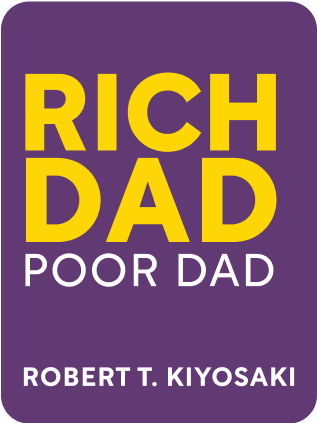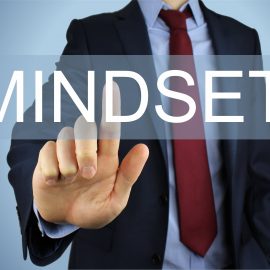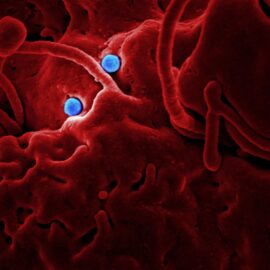

This article is an excerpt from the Shortform summary of "Rich Dad Poor Dad" by Robert T. Kiyosaki. Shortform has the world's best summaries of books you should be reading.
Like this article? Sign up for a free trial here .
Who is the Rich Dad behind Robert Kiyosaki’s bestselling book Rich Dad, Poor Dad?
Since Robert Kiyosaki’s book came out, fans and skeptics alike have tried to learn the answer to the question “who is the rich dad?” Robert Kiyosaki has never directly answered the question “who is the rich dad,” but we do have some clues that point to Richard Kimi as a likely candidate.
Who is The Rich Dad?
There has been some controversy over the identity of Robert Kiyosaki’s rich dad, who some believe never existed. When the book was published, journalists pressed Kiyosaki on the identity of Rich Dad. So who is the Rich Dad? In recent years, Kiyosaki confirmed the Rich Dad is businessman Richard Kimi. Here’s some info on how this information came out, and Kiyosaki’s eventual confirmation.
Is Rich Dad a Myth?
When the book was published, the advice in the book caused many fans and journalists alike to ask “who is the Rich Dad?” Kiyosaki suggested they “treat Rich Dad like Harry Potter.” He indicated that Rich Dad was based on a real person, but was also influence by other ideas and philosophies he’d learned in his business dealings.
In the book, Rich Dad is a powerful local businessman, whose wealth is not dependent on anyone giving him a job or a salary. Rich Dad helps teach Robert Kiyosaki the first basic rule of being rich; making money shouldn’t depend on someone else to pay you. There is some evidence that this is businessman Richard Kimi. But first, read about how Kiyosaki and his friend “Mike,” Rich Dad’s son, decided to take this first step.
Approaching Rich Dad
When considering the question “who is rich dad” you should start with Robert Kiyosaki’s first interactions with Rich Dad in the book. As a 9 year old, Robert Kiyosaki is rejected socially by the rich kids in his public school. He asks his dad, a teacher, how to get rich and make money, but his dad has no satisfactory answer.
He commiserates with his best friend Mike, the only other non-visibly-wealthy kid in the school. They start a misguided idea to melt down metal toothpaste tubes and mint their own nickels. Bemused, Robert’s dad (Poor Dad) suggests they talk to Mike’s dad (Rich Dad), who owns multiple local businesses and seems to be on a good path.
- Poor Dad also notes that the other apparently rich kids have parents who are just like him – they’re employed by the local plantation, and if the company gets into trouble, they’ll soon have nothing. Rich Dad is different since he seems to be paving his own way.
Rich Dad is busy, but meets with them early in the morning between his regular business meetings with his managers. Rich Dad has this dialogue:
- “Here’s my offer. I’ll teach you, but not like a teacher in a classroom. Work for me, and I’ll teach you. Don’t work for me, and I won’t teach you. You’ll learn faster if you work. That’s my offer. Take it or leave it.”
- “Can I ask a question first?” Kiyosaki asks.
- “No. Take it or leave it. I’m too busy to waste my time. If you can’t be decisive and make up your mind quickly, you’ll never learn to make money. Opportunities come quickly and go quickly. You need to know when to make fast decisions. I just gave you an opportunity that you asked for. Will you take it?”
Richard Kimi’s Son Supports The Claim
Eventually, one journalist tracked down Alan Kimi, the son of Richard Kimi, who confirmed that his father was the basis for the Rich Dad character. But this didn’t convince everyone, and there’s still speculation that Rich Dad is made up. However, the Rich Dad character in the book has multiple businesses, and Richard Kimi was a well-known businessman who ran several hotels and other businesses.
In the book, Robert Kiyosaki’s friend “Mike” learns early financial lessons alongside him. So, it makes sense that the Mike character would know about his own role in the book, and know who the Rich dad is. Here’s the story of how young Kiyosaki and Mike learned asked Rich Dad to teach them about money.
Learning From Rich Dad
After Mike and the author work for low wages, they demand more money and better treatment. But Rich Dad says that this is not the point. Rich Dad’s point of the exercise is this:
- Most people accept jobs with lower pay than they deserve out of fear – fear of not paying their bills, of being fired, of not having enough money, of starting over. Fear governs their emotions around money, and they become a slave to working to make money.
- Life pushes everyone around. Many people quit and let the pushing happen. Some get angry and push back, but in the wrong direction – against the boss, their job, their spouse, or the world. Others learn the lesson, try to get better, and move on.
- By getting angry, the author showed Rich Dad that he had enough passion and independence of mind to be worth teaching.
Rich Dad is pleased and says, “you boys are the first to come to me asking how to make money. Over 150 employees work in my companies, and not a single one has come to me to learn about money. They ask for a job or a bigger paycheck, but never to educate themselves about money. So they’ll spend their lives working for money, but not actually understanding it.”
With this, he offers to have the boys continue to work for him for free, an they accept.
Robert Kiyosaki Confirms Rich Dad’s Identity: Richard Kimi
In 2016, Robert Kiyosaki interviewed Alan Kimi and finally answered the question “who is the rich dad?” They discussed Richard Kimi, and Kiyosaki confirmed that Richard Kimi was the inspiration for Rich Dad, and explained that privacy was important to the Kimi family.
Though Robert Kiyosaki undoubtedly learned many business lessons along the way, the most important one came when he was young, when he and “Mike” learned about the true value of money and how to make it.
Rich Dad’s Advice: Work for Free
Rich Dad leaves with this advice: “The sooner you stop thinking you need a paycheck, the easier your adult life will be. Keep learning, keep using your brain, keep working for free, and your mind will make you more money far beyond what I could afford to pay you. You will see opportunities right under your nose that other people choose not to see. They’re blind to these opportunities because they look anxiously for money and security.”
After a few more weeks of working for free, one day Kiyosaki has an insight – the store he worked in regularly disposed of its comic books. Could they collect the books, then start a comic book library open to the public? They could charge other kids 10 cents admission for unlimited reading – a clear bargain, since a comic costs 10 cents each.
After some work, they launch with great success. They earn $9 per week over 3 months. They pay Mike’s sister $1 a week for managing the store.
After three months, bullies break into the room, and Rich Dad suggests they shut down the business. But the lesson was learned: by not being paid, they were forced to find opportunities to make money. They avoided being distracted by the short-term carrot.
The Man, The Myth, The Lessons Learned
Regardless of Rich Dad’s identity, Rich Dad and Poor Dad were meant to serve as parables about the different ways you can view money. So the question “who is rich dad” is less important than what rich dad teaches.
- The Poor Dad represents the standard consensus view on work and money – go to school, get a good job and climb the ladder, prize stability over independence, buy a house, and spend money without a clear long-term plan.
- The traditional schooling system trains this style of thinking. (Plus, employers have the incentive to keep workers thinking this).
- Most parents belong to this system, so they pass it down to their kids.
- The Rich Dad represents what was then a more contrarian view – work for salary if you have to, but aim for financial independence; have your money generate more money; and take calculated risks boldly.
The traditional view worked better in the 20th century, when strong growth and decades-long employment meant stability was a viable strategy. Nowadays, pensions are rarely guaranteed; job security at a loyal employer is rare; professional education and academic success are no longer guarantees for security.
But the traditional thinking is still common. Rich Dad, Poor Dad aims to shake readers out of their current passive path and taking a proactive strategy to building wealth and working for their best interest. Figure out what to do with money once you earn it, learn how to keep people from taking it from you, and make the money work for you. Nonetheless, after the books publication readers were obsessed with the question “who is rich dad?”
So, who is the Rich Dad? Robert Kiyosaki confirmed that Rich Dad is Richard Kimi in 2016, but even before, journalists worked to uncover the answer to “who is the Rich Dad. It’s important to keep in mind the lessons Rich Dad teaches.

———End of Preview———
Like what you just read? Read the rest of the world's best summary of Robert T. Kiyosaki's "Rich Dad Poor Dad" at Shortform .
Here's what you'll find in our full Rich Dad Poor Dad summary :
- The key differences in how rich dad and poor dad approached life
- Why it's a terrible idea to buy an expensive house
- How to overcome your own mental blocks to become wealthy for life






